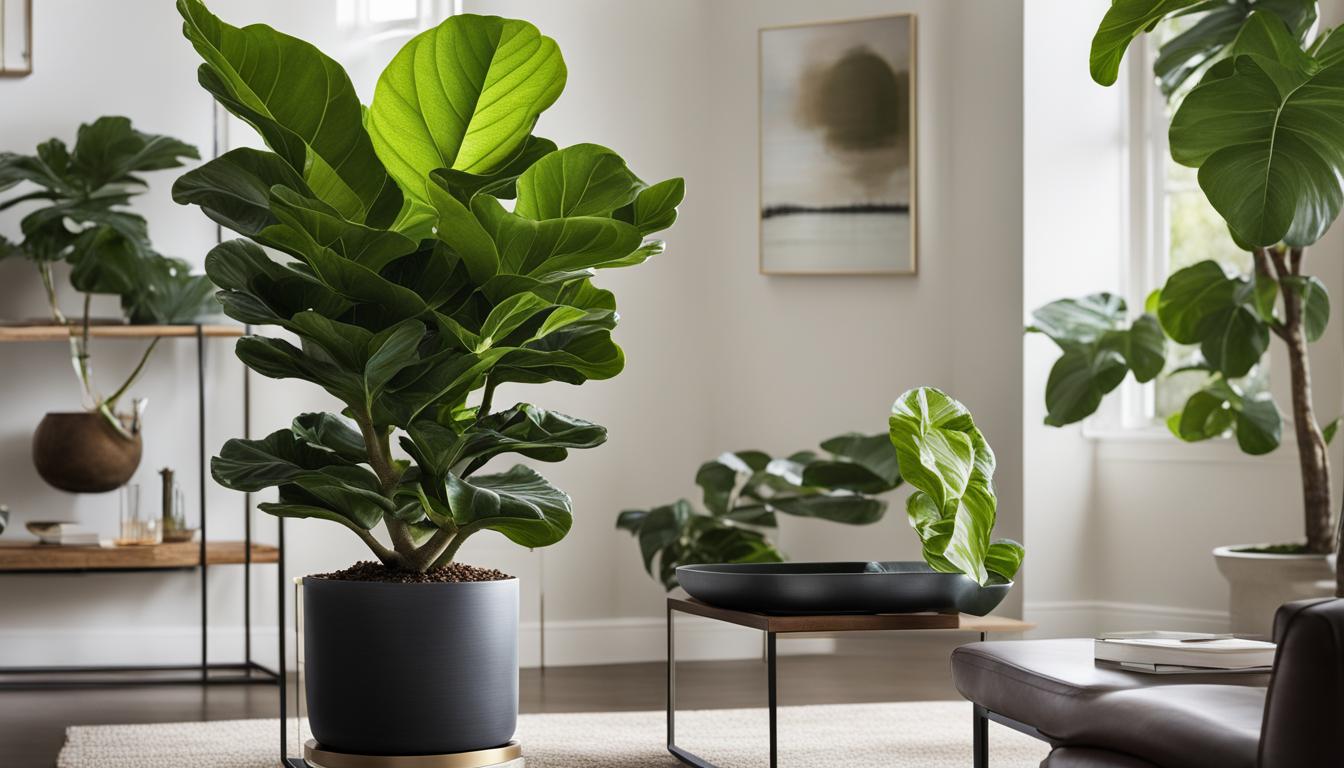
Are you looking to add a touch of green to your indoor space? Fiddle-leaf figs, also known as Ficus lyrata, are a popular choice for indoor plants. With their large, glossy, violin-shaped leaves, they make a striking statement in any room.
When properly cared for, fiddle-leaf figs can grow up to 6 feet tall, adding a touch of elegance to your home. However, it’s important to note that these plants are toxic to cats and dogs, so caution should be taken if you have pets.
Native to tropical parts of Africa, fiddle-leaf figs thrive in warm and wet conditions. Although they can be grown indoors, they do require specific care. Bright, filtered light and well-draining soil are essential for their health and growth.
Watering should be done when the top inch of soil feels dry, and regular fertilization is recommended to keep them nourished.
To maintain a bushier growth habit, regular pruning is necessary. Additionally, there are different varieties of fiddle-leaf figs available, including dwarf varieties and those with variegated leaves.
Propagation can be done through stem cuttings, and repotting should be done annually to provide the plant with fresh soil.
While fiddle-leaf figs are generally disease and pest resistant, they can be susceptible to spider mites, scale insects, and bacterial or fungal diseases. Therefore, proper care and attention are crucial to help them thrive in indoor environments.
Light and Watering Requirements for Fiddle Leaf Fig
Proper light and watering are crucial for the health and overall growth of your fiddle leaf fig (Ficus lyrata). Understanding the specific requirements will help you create an optimal environment for your indoor plant.
Light Requirements:
Fiddle leaf figs thrive in bright, filtered light. They require sufficient sunlight exposure, but direct sunlight can burn their leaves. Place your plant near a window where it can receive indirect sunlight for a few hours each day.
Remember to rotate the plant every few days to ensure even growth and prevent one side from leaning towards the light source.
Watering:
When it comes to watering your fiddle leaf fig, the key is to strike a balance. Overwatering can lead to root rot, while underwatering can cause the leaves to dry out and drop.
The general rule of thumb is to water your plant when the top inch of soil feels dry. You can use your finger to check the moisture level. Avoid using a strict watering schedule and instead rely on the condition of the soil as a guide.
It’s important to note that fiddle leaf figs prefer moderate moisture in the soil, so be mindful not to let the soil dry out completely or become waterlogged. Additionally, flushing the soil with water once a month can help prevent salt build-up, which can be harmful to the plant.
Creating the ideal light and watering conditions for your fiddle leaf fig will ensure its healthy growth and vibrant foliage. Remember to provide bright, filtered light and water your plant when the soil is dry to the touch. With proper care, your fiddle leaf fig will thrive and become a stunning focal point in your home.
Fertilizer and Pruning Tips for Fiddle Leaf Fig
Proper fertilization and pruning are essential for maintaining the health and appearance of your fiddle-leaf fig. Fertilizing your plant regularly during the growing season will provide it with the necessary nutrients to thrive.
Use a high-nitrogen plant food specifically made for fiddle-leaf figs and follow the instructions on the label for best results. This will help promote healthy growth and lush foliage.
When it comes to pruning, there are a few key steps to keep in mind. First, remove any damaged or dead leaves as soon as you notice them. This will prevent the spread of any potential diseases and keep your plant looking its best.
Trimming the top of the main stem can encourage bushier growth and a more compact shape. However, be mindful not to remove too much foliage at once, as this can shock the plant.
Propagation of fiddle-leaf figs can be done through stem cuttings. Simply take a cutting from the main stem, making sure it has at least two to three leaves, and place it in a jar of water.
Once roots have formed, you can carefully transfer the cutting to a pot with well-draining soil. Repotting should be done annually for younger plants, while mature plants may benefit from having the top layer of soil replaced each spring.
Pruning Tips:
- Remove damaged or dead leaves promptly to maintain plant health.
- Trim the top of the main stem to promote bushier growth.
- Be cautious not to remove too much foliage at once, as this can shock the plant.
Propagation and Repotting Tips:
- Propagate through stem cuttings by placing them in water until roots form.
- Transfer rooted cuttings to well-draining soil in a pot.
- Repot younger plants annually and replace the top layer of soil for mature plants each spring.
| Fertilization | Pruning | Propagation and Repotting |
|---|---|---|
| Use high-nitrogen plant food for fiddle-leaf figs during the growing season. | Remove damaged or dead leaves promptly to maintain plant health. | Propagate through stem cuttings and transfer rooted cuttings to well-draining soil. |
| Follow label instructions for proper fertilization. | Trim the top of the main stem to promote bushier growth. | Repot younger plants annually and replace top layer of soil for mature plants each spring. |
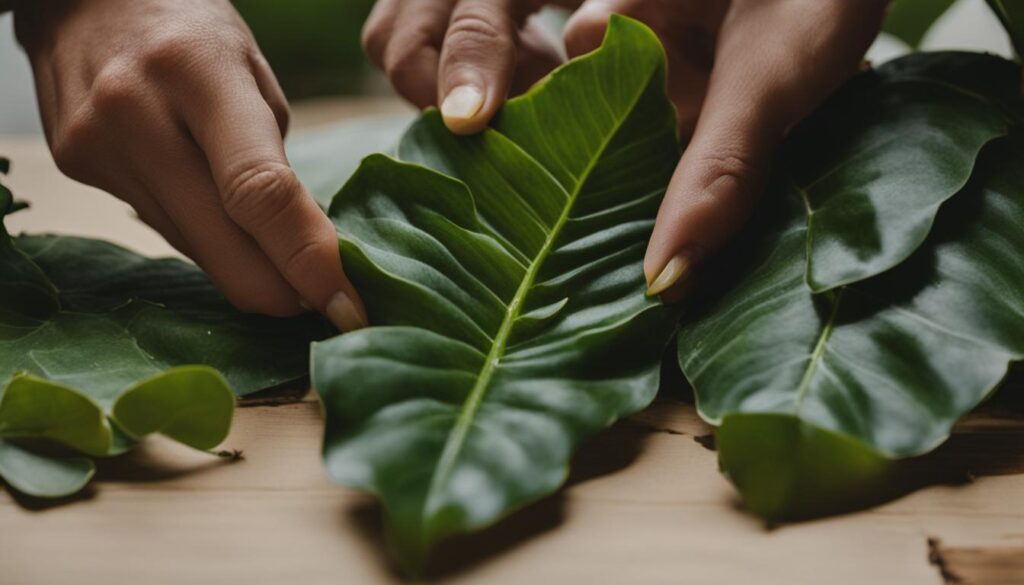
Types and Common Issues of Fiddle Leaf Fig
When it comes to the fiddle-leaf fig, there are not only different varieties to choose from but also common issues that plant parents should be aware of. Let’s explore the various types of fiddle-leaf figs and the potential problems that may arise.
Types of Fiddle Leaf Fig
The main species of fiddle-leaf fig is the Ficus lyrata, but there are several cultivars available for plant enthusiasts. If you’re looking for a smaller version, you can opt for dwarf varieties like the Ficus lyrata ‘Bambino’ or the Ficus lyrata ‘Compacta’.
For those who crave a splash of color, there’s the Ficus lyrata ‘Variegata’ with its showy variegated leaves. Each variety adds a unique touch to your indoor plant collection.
Common Issues with Fiddle Leaf Fig
While fiddle-leaf figs are relatively low-maintenance, they can encounter a few common problems. One issue to watch out for is leaf distress, which can be caused by factors such as excessive sunlight, overwatering, extreme temperature fluctuations, or bacterial problems.
If you notice light brown or bleached spots on the leaves, it indicates too much direct sunlight. On the other hand, dark brown spots or browning edges may be a sign of root rot from overwatering.
Extreme temperature changes can also cause brown spots on the leaves. Additionally, if the newer leaves turn yellow, it may indicate a bacterial problem. As for pests, spider mites and scale insects are the most common culprits.
Prompt treatment with suitable remedies or pesticides is crucial to keep your fiddle-leaf fig healthy and thriving.
By knowing the various types of fiddle-leaf figs and being aware of the potential issues they may face, you can better care for your indoor plant and ensure its longevity.
With proper attention and a little troubleshooting, your fiddle-leaf fig will continue to make a stunning statement in your home.
FAQ
How much light does a fiddle-leaf fig need?
Fiddle-leaf figs require bright, filtered light to grow and look their best. Direct sunlight can burn the leaves, while low light conditions can hinder growth.
How often should I water my fiddle-leaf fig?
Watering should be done when the top inch of soil feels dry, as overwatering can lead to root rot. Fiddle-leaf figs prefer moderate moisture in the soil, and flushing the soil monthly can help prevent salt build-up.
Do I need to fertilize my fiddle-leaf fig?
Yes, regular fertilization with high-nitrogen plant food during the growing season is recommended. Fertilizers specifically made for fiddle-leaf figs are available and should be used according to label instructions.
How should I prune my fiddle-leaf fig?
Pruning can help maintain a bushier growth habit and should involve the removal of any damaged or dead leaves. Trimming the top of the main stem can also promote bushier growth.
Are there different varieties of fiddle-leaf figs?
Yes, there are different varieties available, including dwarf varieties like Ficus lyrata ‘Bambino’ and Ficus lyrata ‘Compacta’, as well as the uncommon variety Ficus lyrata ‘Variegata’ with showy leaves.
What are some common issues with fiddle-leaf figs?
Common issues include leaf distress caused by excessive sunlight, excessive watering, extreme temperature swings, or bacterial problems. Pest-wise, fiddle-leaf figs can be prone to spider mites and scale insects.


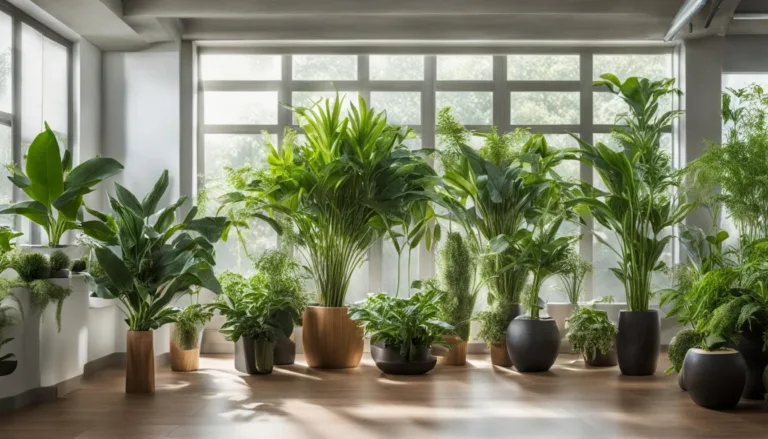
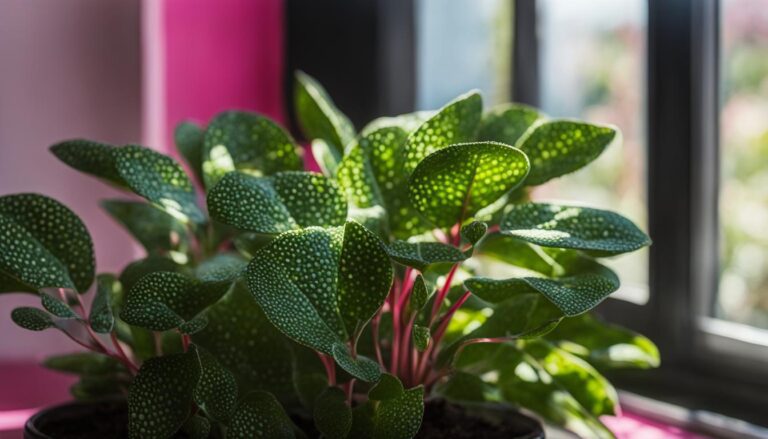

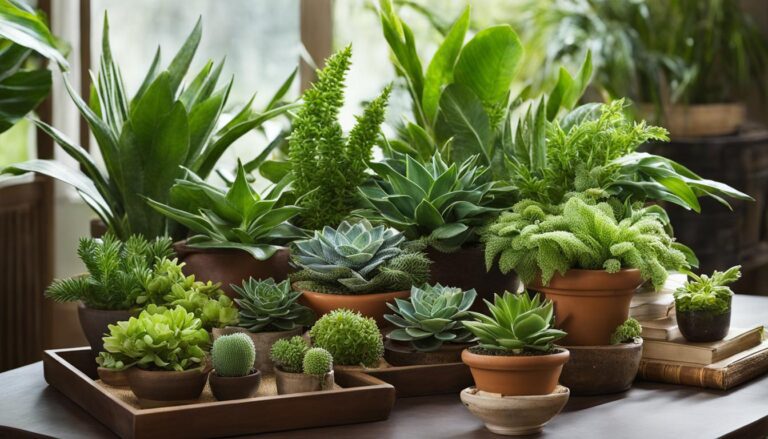

One Comment
Comments are closed.